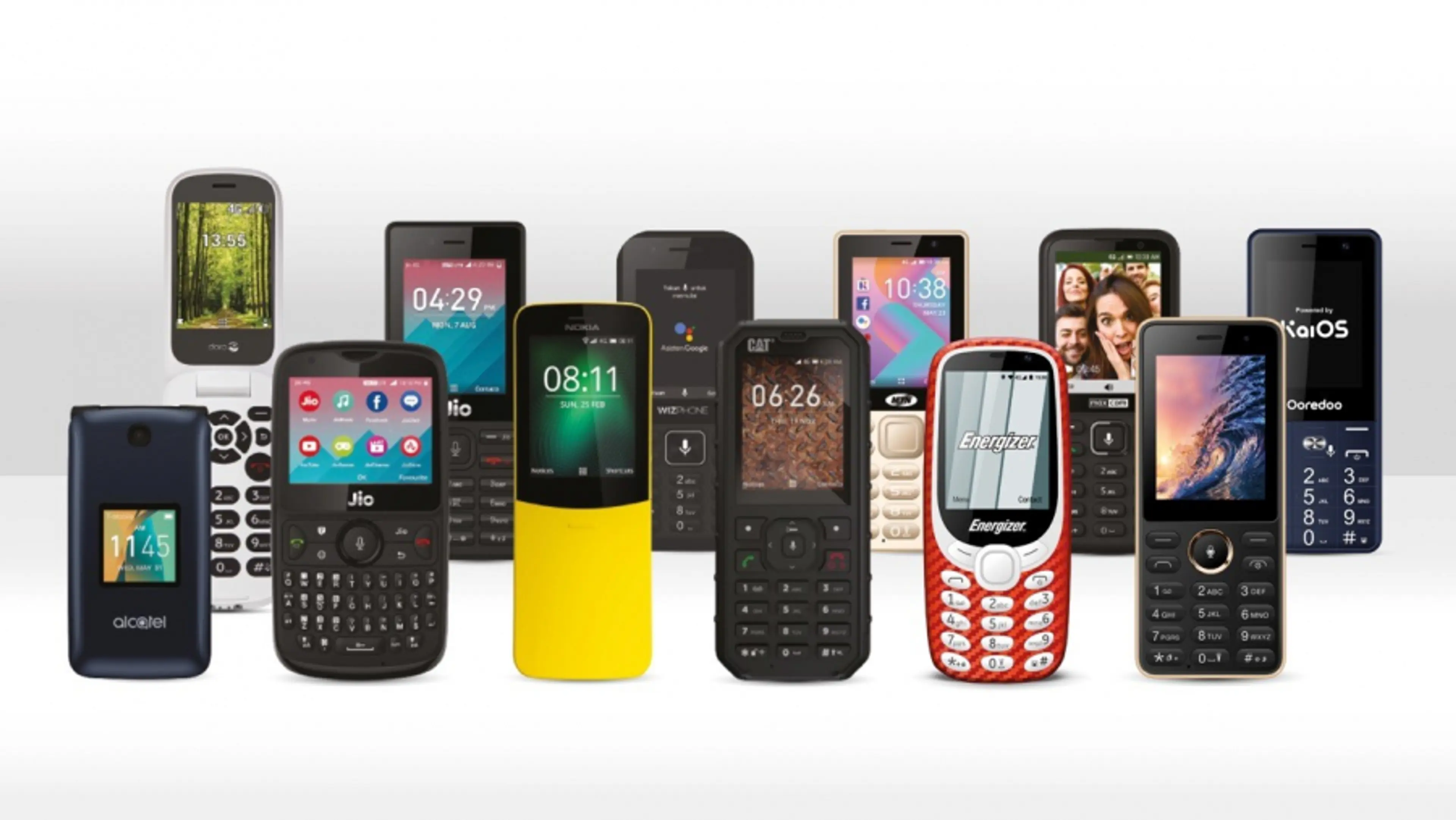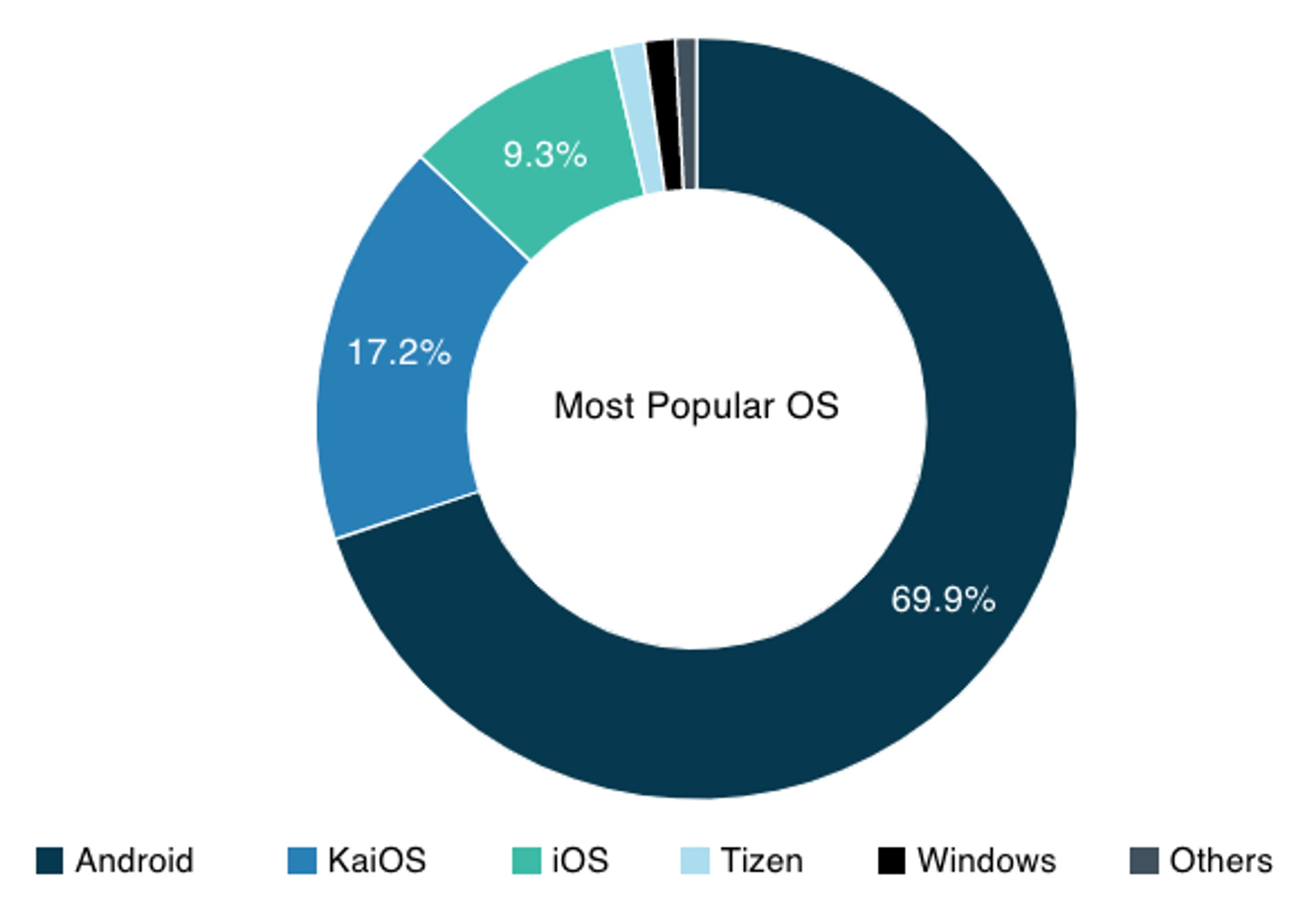Heads up: Our Ideas Factory has been refreshed, levelled up, and grown-up into Alphero Intelligence. Some of our old posts are pretty cool tho'. Check this one out.

- KaiOS is an alternative mobile system for low-spec mobile phones
- It’s growing in parts of the world as an alternative to Android for cheap smartphones for those that can’t afford latest models
- KaiOS devices deliver great value and functionality for their cost
For most people it would be hard to think how they would live without their smartphone now. Camera, Internet, GPS — all those handy and convenient functions that help you connect with other people and look at cat memes anytime you want, anywhere you want.
But smartphones are also expensive. Flagship (latest model, latest tech) mobiles can cost upwards of $1,500. Even the low range of the newest phones can require six hundred to eight hundred of your hard-earned dollars so you can enjoy some of the wonders of mobile technology. These phones tend to be energy-hungry and chomp away on data in the background doing all sorts of things under the hood — things only those with access to cheap energy and bulky data plans can fully enjoy.
Below the $500 mark, you start going to secondhand old models or very low spec phones. These tend to become obsolete fast as both Apple and Google don’t really look back when developing new operating systems, and the march of progress continues leaving those that can’t afford new phones with apps that can’t be updated because they’re on an old system, and a suboptimal experience. Even worse, there is a large portion of the population around the globe to which $200 can equal months of work and can’t think about buying an old secondhand phone.
Enters KaiOS
KaiOS is an operating system designed to run on low spec devices — think the old looking Nokia phones of the ’90s and early 2000s, with the physical button pads and a small screen. The company estimates 4 billion people don’t have access to smartphones due to the cost of devices and data, but also feel intimidated by flashy smartphones with touchscreens.
The system is being deployed by companies such as Nokia, Alcatel, Cat and Jio on their basic devices. The uptake in developed markets is low as populations in these markets tend to be able to get good-enough phones as part of monthly packages — still, this is a generalisation and there are sectors of the population in every country that can’t. Thus far, the main market where KaiOS is quickly growing as an alternative to Android is India, but also in other parts of Asia as well as Africa.

But what can it do?
KaiOS devices can do pretty much anything a fancy smartphone can do with a few caveats. Wifi, 4G, GPS and alike are all there. They all have Google Assistant built in, and major apps are also available on the KaiOS Store: Facebook, YouTube, WhatsApp, Google Drive/Calendar/Gmail, Dropbox, Games, and pretty much all sorts of other utilities you can think of. Apps tend to be a bit stripped down and performance is slower than what you’re used to on smartphones today. Still, you get a lot of bang for your buck.
Support for specific hardware-dependent functions such as dual Sim and Bluetooth will depend largely on the hardware and can affect the price of the device. Camera quality is one of the things that make new phones so expensive, and they tend to be modest but respectable on KaiOS devices (1.3MP being common).
Did I mention some manufacturers are boasting 25 days of battery on stand-by? Reports of heavy users put its battery life between 6-10 days, which is still a refreshing idea for ones out there that boast their last phone battery lasts almost two days.
In NZ, KaiOS devices are currently available between $80 and $150.
What’s Alphero doing with KaiOS?
Our team has been exploring how we could use the new device to help connect people in NZ that, for one reason or another, don’t have access to a smartphone, or are not comfortable with technology. Could we provide access to refugee populations that didn’t have access to smartphones in their country of origin? What about prisoners coming back to society that haven’t been exposed to the technology development of later years?
The system is based on web technologies, which makes it easy to develop to and distribute. We’re also deploying some new prototypes to see how far we can push the system capabilities.


